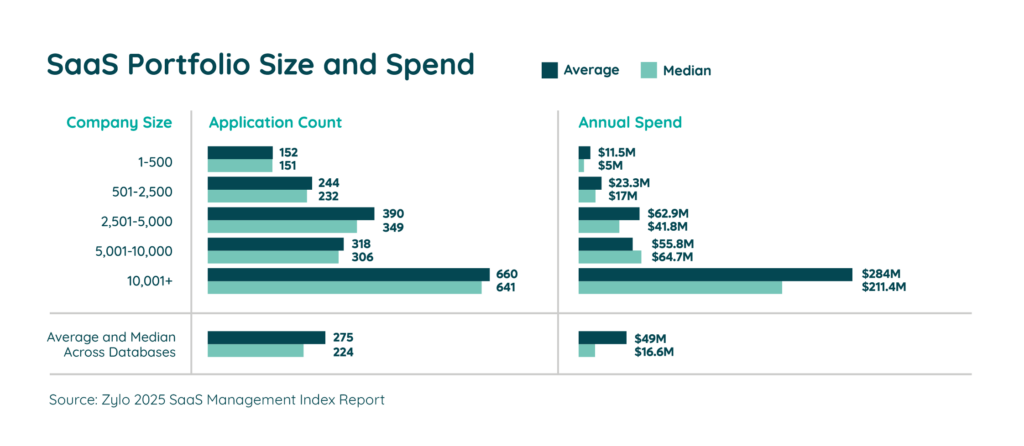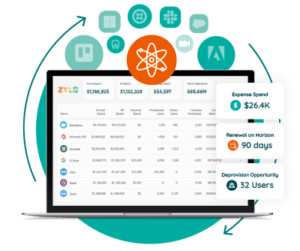Table of Contents
The percentage of businesses helmed by MBA-holding CEOs has more than tripled since the 1970’s. And in the mind of the MBA captain, the answer to better profit margins is always to run the crew leaner, not hire more hands. To do more with less.
Now imagine the workload your finance and accounting teams encounter when monthly expense reports are submitted and eight more SaaS applications have been added. Most of these apps, by the way, will become orphaned and/or prove incompatible as they age. Becoming more bloat for your monthly bottom line.
Almost half (45%) of all SaaS transactions happen via employee expense (i.e. shadow IT), often without transparency or accountability. So your lean, efficiency-minded finance and accounting teams sort through expense reports peppered with obsolete, unsupported, and possibly vulnerable apps.
With that much shadow IT, what does that cost your business?
Cost of Shadow IT
Even if we ignore security risks associated with shadow IT, where the average cost of a data breach in the United States was $4.8M in 2024 — this according to an IBM study.
And even if we ignore the rising costs of software. Public cloud spending is expected to more than double by 2025. And by 2026, a majority of the top 20 software vendors will increase costs by at least 35% — this according to Gartner.
It still costs your organization $67.88 to process a single expense report. $67.88 is not bad if you’re paying someone to file your taxes.
Consider this: the overwhelming majority of SaaS applications are billed monthly. Couple that with the number of employees expensing those apps (1 in every fifteen), and it stands to reason that there will be a direct financial impact to the operational overhead required to process the expenses. Talk about compounding chaos.
To put it another way, all of those applications that are underutilized or abandoned altogether – well, you’re effectively paying for those apps twice. Once when your employee purchased the subscription, and again when the expense was processed.

Curb the Cost with Comprehensive Visibility
The path most often taken in this situation is to hire additional resources (more overhead) to keep pace with the churn. Which, far from solving the problem, exacerbates it. More staff means more people using apps, ironically. An accountant who doesn’t know they’re being hired to offset the burden of shadow IT will have their favorite spreadsheets and messaging apps too.
The axiom is true. In the modern business world, we need to do more with less.
 Which means instead of assigning the burden of processing SaaS expenses to overworked finance and accounting teams, keep it simple. Start with comprehensive visibility to your entire SaaS estate.
Which means instead of assigning the burden of processing SaaS expenses to overworked finance and accounting teams, keep it simple. Start with comprehensive visibility to your entire SaaS estate.
Alternatively, you can keep deprioritizing SaaS Management and continue reimbursing employees for SaaS applications each time expense reports are submitted.
The cost of inaction on your SaaS is upwards of $127 million per year for enterprises. When you factor in the operational expenses of shadow IT, you have that many more reasons to start addressing this challenge today.
See how Zylo can help you address this hidden cost of shadow IT by requesting a demo with one of our experts.

